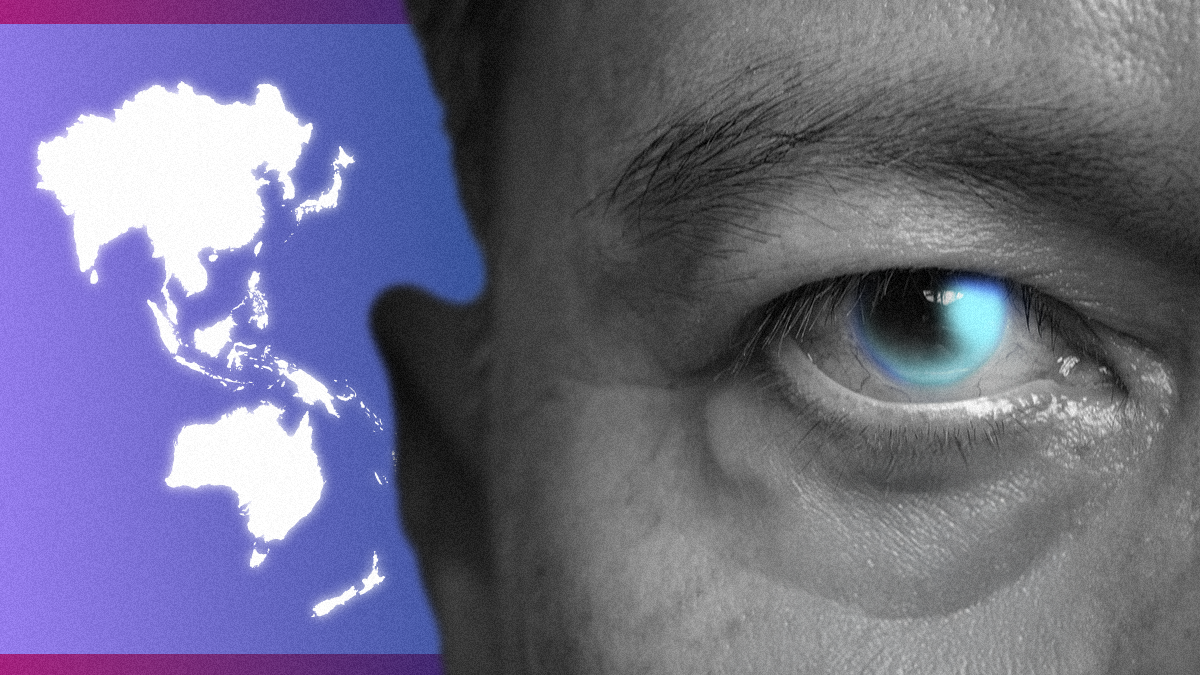Preventable blindness is rising across Asia Pacific, and a new survey uncovers the reasons why.
A newly released APAC Vision Health Survey, commissioned by Roche (Basel, Switzerland), has revealed a significant gap between concern for eye health and preventive action across Asia Pacific—a region that bears nearly two-thirds of the world’s moderate-to-severe vision impairments.¹
Conducted across 4,354 adults aged 40+ in eight APAC markets—Australia, Hong Kong, Malaysia, Philippines, Singapore, South Korea, Taiwan and Thailand—the survey provides a regional snapshot of public perception around vision health, its ties to aging and diabetes and knowledge of retinal disease.
The survey results showed that while 91% of adults over 40 express concern about their vision, only 28% undergo annual or more frequent eye exams, and one in three delay care until symptoms appear. Alarmingly, 12% have never seen an eye care professional.
This disconnect is especially concerning given that 90% of vision impairment is preventable or treatable with timely care.2 As the region’s population ages and diabetes rates continue to climb—two leading risk factors for vision loss—the urgency to act has never been clearer.3-5

Economic consequences are equally significant.
“The survey results reflect what we see in clinical practice,” said Professor Andrew Chang, vitreoretinal surgeon at Sydney Eye Hospital and secretary-general of the Asia Pacific Vitreo-retina Society (APVRS). “There is both an urgent need and a clear opportunity for the healthcare community to develop more effective approaches to vision health.”
Chang emphasized the need to integrate eye care into broader healthcare systems: “This means raising awareness among the public and high-risk groups about the importance of early screening. It also means integrating vision care into existing healthcare frameworks like diabetes and geriatric care and using technology to create more accessible pathways for all patients.”
READ MORE: How Research Collaborations are Advancing Eye Care in Asia-Pacific
And the cost of inaction? Huge. According to the Lancet Global Health Commission, vision impairment results in US$411 billion in lost productivity each year.2
5 Key Takeaways from the APAC Vision Health Survey
1. The hidden cost of vision loss
When people think about going blind, their concerns go far beyond just losing their sight.
In fact, the survey found that 68% fear losing the ability to perform basic daily tasks like cooking or cleaning, while 53% worry about mobility challenges, whether it’s driving or using public transportation. For 46%, the fear is tied to job security. Mental health is also a major concern, with 38% expressing anxiety about its potential impact.
The burden extends beyond those directly affected—95% of caregivers reported facing emotional distress, financial strain or burnout as a result of supporting someone with vision impairment.
2. People are worried—but still not acting
Despite widespread concern about vision health, many people across Asia Pacific still aren’t taking preventive action. In fact, 91% of adults over 40 say they’re worried about vision loss, yet only 28% report getting annual or more frequent eye exams. One in three admits to waiting until symptoms appear before seeking help, and 12% have never seen an eye care professional at all.
This gap between awareness and action is concerning—especially when 90% of vision impairment is preventable or treatable. It highlights a critical missed opportunity to protect vision through regular screenings and early intervention.
3. Diabetes and vision loss go hand in hand
Two-thirds of survey respondents with diabetes said they’ve experienced vision problems like blurred vision or floaters. Yet despite these symptoms, about one-third still don’t get yearly eye exams.
When asked why, 37% said it’s too expensive, 24% pointed to lack of time and 20% admitted they weren’t aware of the importance of regular screenings.
READ MORE: Why Functional Testing Matters in Retinal Disease Imaging
It’s a worrying trend—especially considering the Western Pacific Region had 206 million people with diabetes in 2021, the highest of any region globally.4,6

4. “It’s just aging”—a harmful misconception
Many people seem to think losing vision is just part of getting older. In fact, the survey found that a whopping 94% believe age-related vision loss is inevitable. But that mindset could be doing more harm than good—because it may stop people from getting the regular eye checks that can catch problems early.7
And here’s the concerning part: older adults are at the highest risk1, yet fewer than 6 in 10 people aged 60+ say they go for regular eye exams. That means a lot of people are missing early warning signs—and early treatment opportunities.
READ MORE: Advances in AMD and DME Take Center Stage at APAO 2025
5. Awareness of retinal diseases is low
When it comes to retinal diseases that can seriously affect vision, awareness is surprisingly low. Conditions like diabetic macular edema (DME), age-related macular degeneration (AMD) and retinal vein occlusion (RVO) just aren’t on most people’s radar.
The numbers back this up, too. The survey found that 59% had never heard of RVO, 42% were unfamiliar with DME and even 29% didn’t know about AMD—despite the fact that 200 million people worldwide live with AMD.8 DME and diabetic retinopathy are also among the leading causes of vision loss in working-age adults in developed countries.9
READ MORE: NexThera, Oculis and Bayer Report Advances in Retinal Disease Therapies

Rethinking eye health across APAC
“This survey doesn’t just highlight challenges—it identifies where change is urgently needed,” Area Head of Roche Pharmaceuticals, Asia Pacific, Ahmed Elhusseiny. “The economic and human costs of delayed intervention are simply too high,” he said.
“What’s clear from these findings is that we need innovative approaches to bridge the awareness-action gap and strengthen prevention efforts—helping more people access the care they need and preserve their vision for longer. When vision health becomes a priority across healthcare systems, we all benefit—patients, families, and society as a whole,” explained. Mr. Elhusseiny.
Editor’s Note: Read more about the APAC Vision Health Survey here.
Editor’s Note: This content is intended exclusively for healthcare professionals. It is not intended for the general public. Products or therapies discussed may not be registered or approved in all jurisdictions, including Singapore.
References
- World Health Organization. World Report on Vision. World Health Organization. 2019. Available at: https://www.who.int/publications/i/item/world-report-on-vision Accessed on April 23, 2025.
- Burton MJ, Ramke J, Marques AP, et al. The Lancet Global Health Commission on Global Eye Health: vision beyond 2020. Lancet Glob Health. 2021;9(4):e489-e551.
- Asian Development Bank. Adapting to aging Asia and the Pacific. Asian Development Bank. Available at: https://www.adb.org/what-we-do/topics/social-development/aging-asia Accessed on April 23, 2025.
- Nanditha A, Ma RCW, Ramachandran A, et al. Diabetes in Asia and the Pacific: Implications for the global epidemic. Diabetes Care. 2016;39(3):472-485.
- Godman H. Surprising risk factors for vision loss. Harvard Health. February 1, 2024. Available at: https://www.health.harvard.edu/diseases-and-conditions/surprising-risk-factors-for-vision-loss Accessed pm April 23, 2025.
- International Diabetes Federation. Facts & figures. International Diabetes Federation. February 14, 2025. Available at: https://idf.org/about-diabetes/diabetes-facts-figures/ Accessed on April 23, 2025.
- National Institute on Aging. Aging and your eyes. National Institute on Aging. July 28, 2021. Available at: https://www.nia.nih.gov/health/vision-and-vision-loss/aging-and-your-eyes Accessed on April 23, 2025.
- Vyawahare H, Shinde P. Age-Related Macular Degeneration: Epidemiology, Pathophysiology, Diagnosis, and Treatment. Cureus. 2022;14(9):e29583.
- Kropp M, Golubnitschaja O, Mazurakova A, et al. Diabetic retinopathy as the leading cause of blindness and early predictor of cascading complications-risks and mitigation. EPMA J. 2023;14(1):21-42.



